NITROUS OXIDE / CONSCIOUS SEDATION / IN-OFFICE IV SEDATION/GENERAL ANESTHESIA / HOSPITAL DENTISTRY
NITROUS OXIDE
Nitrous oxide, or laughing gas, is the most common and least invasive form of sedation used for redusing mild-to-moderate anxiety in children. Nitrous is inhaled through a nasal hood/mask that is placed over your child’s nose. It is an EXTREMELY effective way to calm mild to moderate anxiety in children.
Your child will be asked to breathe through his or her nose and not through the mouth. As the gas begins to work, your youngster will be able to relax easier. Some children describe the experience as feeling like they’re ‘floating/flying’ or that they’re ‘sinking slowly into a giant pillow’. It should be noted that nitrous oxide does NOT put your child to sleep but reduces anxiety and helps them relax. Some children may fall asleep but are easily aroused. Most children remain awake and are able to interact with the dentist.
At the end of your child’s appointment, he or she will be placed on 100% oxygen in order to remove all of the nitrous oxide from their system, this usually takes 3-5 minutes. All of the effects of nitrous oxide will disappear at this period.
We recommend nitrous oxide for children who fall into one of the following categories:
- Children who have mild to moderate dental anxiety
- Children who have had a hx of poor behavior in the dental setting
- Cooperative children undergoing a lengthy appointment
- Cooperative children undergoing more invasive procedures (ie, extractions)
- Young children (using nitrous ensures that your young one retains a positive impression of the dental office)
As your son or daughter gets older and becomes more comfortable during dental visits, nitrous oxide may not be necessary.
CONSCIOUS SEDATION
In some cases, dental treatment is necessary in a precooperative or highly anxious child who cannot cope with the procedure while being alert and awake. We are happy to offer your child the option of comfortable, safe, and effective sedation dentistry. Pediatric dental patients who might benefit from sedation dentistry are:
- Infants and toddlers
- Children with an overwhelming fear or anxiety in the dental setting
- Children who have a hard time sitting still for long periods of time
- Children who have extensive treatment plans that would otherwise require multiple appointments
- Children who have a hard time getting or staying numb from anesthetics
What is conscious sedation?
Conscious sedation allows Dr. Sloan to provide needed treatment while your child is in a reduced state of conciousness but still responsive if necessary. The medication can be administered orally or through the nose, depending on your child’s cooperation level. There are several benefits to sedation dentistry, including:
- No memory of undergoing the procedure
- No sense of time while under sedation
- No fear or anxiety during treatment
How are sedatives administered?
- Inhalation — Nitrous oxide, or laughing gas, is the most frequently used method for easing mild-to-moderate anxiety. Recovery is quick so your child can resume normal activities immediately.
- Oral — An extremely common technique for dental sedation is oral sedation. It is easy and does not require the use of needles. Your child will either be given a prescription pill which, taken about an hour before the appointment, will have your child fully relaxed by the time you arrive at our office; or a medicine will be administered at the dental office which takes about 20 minutes to take effect.
- Intranasal — Many precooporative children are unable or unwilling to drink oral medication. For these children, we recommend an intranasal spray, similar to the flu mist given by pediatricians. A mist of the medication is sprayed into each of your child’s nostrils. The benefit to intranasal administration is that it has a much faster onset and much shorter recovery period.
Please contact our practice to schedule a consultation, learn more about sedation dentistry, and find out which sedation dentistry method may be right for your child.
IN-OFFICE IV SEDATION OR GENERAL ANESTHESIA
We recognize that some of our patients may require more advanced treatment options due to seemingly insermountable dental anxiety or precooperative behavior due to young age. A bad experience in the dental office at a young age can impact a child’s perception of dental appointments that will impact their lifetime of care. To avoid this our doctors and staff work hard to make sure that your child has a comfortable, positive experience. That’s why we offer IV sedation dentistry for patients who need a little extra comfort while receiving treatment.
South Hills Pediatric Dentistry is proud to offer customized in-office IV sedation or general anesthesia that is safe and effective.
How In-office IV Sedation and General Anesthesia Works
Prior to your child’s appointment they will need to be cleared medically for the procedure. For healthy kids this can be as simple as filling out and submitting a medical/surgical history to our anesthesia team. Some kids we require a letter from their pediatrician stating that your child is healthy enough to undergo sedation.
We’ve hand-selected a Certified Dental Anesthesiologist, who is amazing working with children, to offer the best and safest care for your child. Dr. Duckworth will gently place a mask over your child’s mouth and nose. The mask is fruit scented for your child’s enjoyment. Once asleep he will place an IV, either in your child’s ankle or hand. Medication is then administered through the IV to allow them to comfortably sleep throughout the entire appointment. After the IV is placed, he will typically place a tube that protects your child’s airway. This ensures the safest care for your child. Once treatment is complete, your son or daughter will wake up feeling refreshed, with no memory of the appointment and a healthy smile.
Differences Between IV Sedation & General Anesthesia
- Level of consciousness: In IV sedation, children are in a depressed state of consciousness, unresponsive to verbal stimulus, but may still respond to painful stimulus. In general anesthesia, children are unresponsive to verbal or painful stimulus.
- Medications: In IV sedation, often short acting IV benzodiazepines are utilized. Whereas for general anesthesia, a wide range of medications may be utilized to achieve the desired result.
- Intubation: A tube is typically utilized for general anesthesia, through your child’s nose into their airway, to maintain a safe airway.
To prepare your child for general anesthesia, follow the guidelines given to you by the doctor regarding food and fluid intake before and after the procedure. Discuss the procedure with your child using simple terms that he or she can understand. Let your child rest quietly at home after the procedure. He or she will probably be ready to resume normal activities the next day.
If you feel that your child could benefit from in-office IV sedation or general anesthesia, please contact us and let us know how we can best accommodate your family’s needs.
PEDIATRIC HOSPITAL DENTISTRY
Some children are not recommended for treatment in the dental office. Typically this is because of conditions that would potentially require your child to stay in a controlled environement overnight to monitor their recovery. Our practice offers gentle and effective dental care to infants, children, and adolescents in the nurturing environment of our local hospital.
Hospital dentistry is similar to in-office general anethesia, except it is performed in the hospital. Some conditions that may require treatment in the hospital setting rather than in the dental office are:
- Congenital heart disease
- Immunosuppression/Chemo or radiation therapy
- Severe bleeding disorders
- Very young age
- Special needs children & adolescents
Ask us if you have any questions or concerns with our varying options to treat your child in the best and safest way using this wide range of sedation options.






